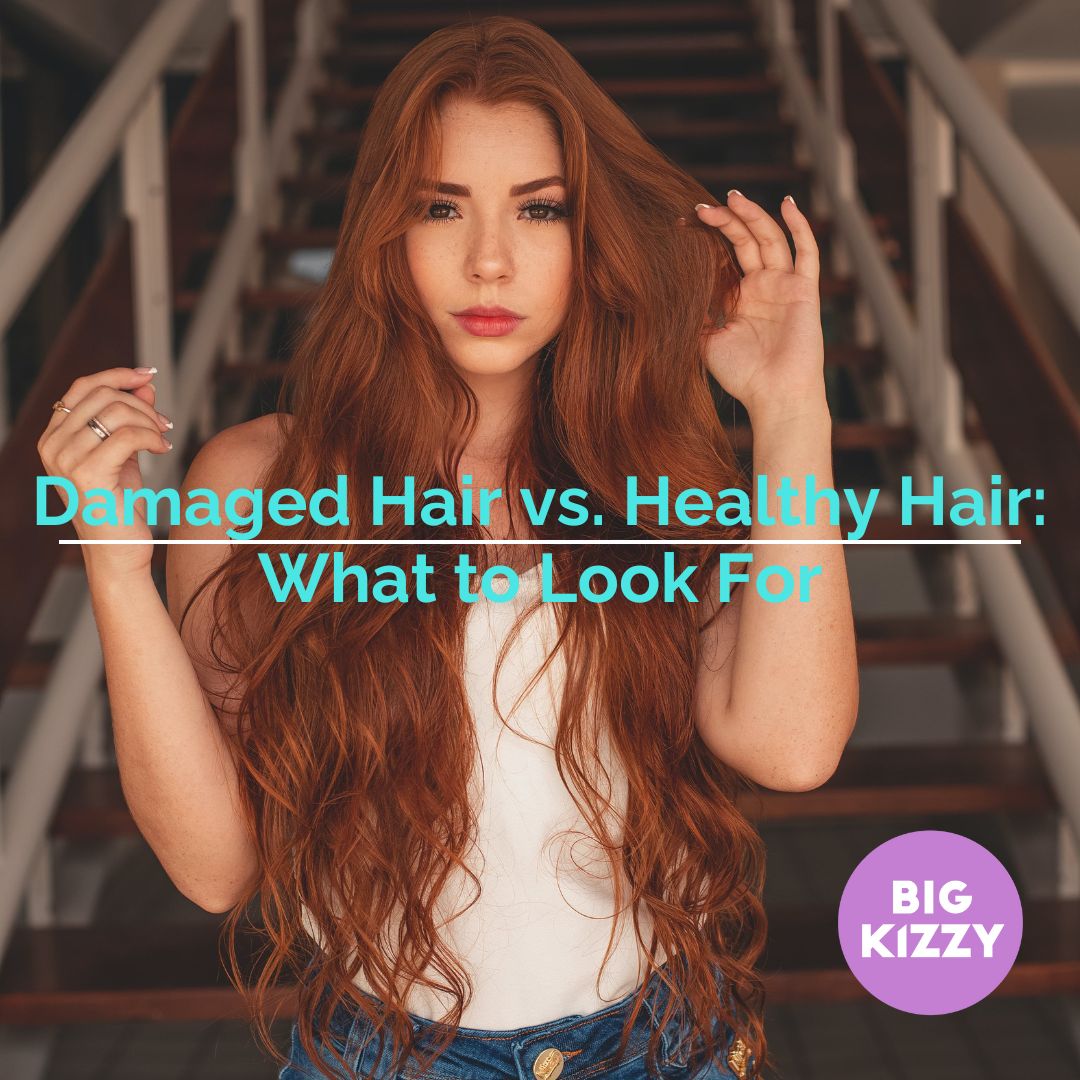It’s one of our biggest hair fears—having damaged strands! Whether you’ve slacked on your hair care routine or heat-styled your tresses one too many times (heat-damaged hair vs healthy hair is one of the biggest culprits!), your hair won’t be as healthy as it can be. We all want vivacious tresses that are worthy of hair care ads, but sometimes it’s not that easy!
Our hair is constantly bombarded by the elements, such as wind, rain, and harsh UV rays from the sun. We go for a swim at the pool or the beach, not considering the effects of saltwater or chlorine on our hair. We dye our hair and get keratin treatments. This is all a part of our lives, yet our hair might not be so happy about it!
But how can you tell if you’re dealing with damaged hair vs healthy hair? And how do you make sure you can always strive for healthier strands? At Big Kizzy, we specialize in all things hair (and hair extensions!). We’ll help you determine whether you’re dealing with damaged vs healthy hair with the telltale signs of both. Then, we’ll go over some top hair care tips to keep those locks healthy and strong all year long. Only healthy hair from now on, deal? Here we go!
Look for The Signs of Healthy Hair vs Damaged Hair
If your hair feels more drab than fab, you might start to feel slightly concerned. Nobody wants to deal with damaged strands. It’s essential to know what signs to look out for so you can stop the damage in its tracks before it gets any worse. The goal here is to know what damaged hair vs healthy hair looks like so you can create a hair care plan of action.
Here are some surefire ways to determine healthy hair vs damaged hair:
Damaged Hair
- Dry and brittle
- Dull and flat
- Frizzy and frayed
- Thin or split ends
- Hard to manage
- Hair isn’t growing as fast as it should
- Crunchy or stiff feeling when wet
- Never-ending tangles and knots
- Hair loss or excessive shedding
Healthy Hair
- Soft and smooth
- Shiny and silky
- Bouncy elasticity
- No signs of split ends
- Manageable when styling
- Hair growth is healthy and strong
- Your strands hold moisture well
- Easily detangled and less prone to knots
- Minimal hair shedding (between 50-100 strands a day)
How to Keep Hair Healthy and Avoid Damage
So, what’s the verdict? Now that you know the signs of damaged hair vs healthy hair, how are your tresses holding up? Many of us will experience some, if not all, of the qualities of both damaged and healthy hair at some point. No one is perfect, and sometimes it can be difficult to keep up with a solid hair care routine (we get it!). But once you know how to care for your hair properly, there’s no turning back! You’ll love your healthy strands so much that you’ll wonder why you slacked so hard before.
Keep Heat Styling to a Minimum
Heat styling is one of the number one causes of hair damage. If you’re wondering whether you’re dealing with heat-damaged hair vs healthy hair, think about your heat-styling habits. Are you blow drying your hair every day? Do you use a protective heat spray? Are you using the highest heat setting? The answers to these questions will determine whether or not you’ve heat-damaged your locks. Our advice: limit heat styling, always use a protective heat spray, and select the lowest heat setting.
Avoid Washing Hair with Hot Water
Simply put, hot water on your strands is not recommended. This will dry out your hair (similar to the way that heat styling does!). It can also dry out your scalp, which can lead to itchiness and dandruff. Your roots will become weaker, and you’ll notice more frizz as a result. Instead, try to wash your hair with lukewarm or cold water to help seal your hair cuticles and preserve your hair’s natural oils, among other benefits.
Stay Consistent with Your Hair Care Routine
The ultimate difference in whether or not you’ll have damaged hair vs healthy hair is in your hair care routine. Having a proper routine that you keep up with makes a massive difference in your hair health. Start by using a shampoo and conditioner that’s paraben and sulfate-free (which can be harsh on your strands). Aim to wash your hair a few times a week rather than every day. You can use a dry shampoo and dry conditioner on those in between wash days. Use hair oils and serums to replenish moisture and infuse nutrients into your tresses.
Has your hair seen better days? It’s time to turn those damaged strands into healthy locks! Find all of the best hair care products with Big Kizzy.


